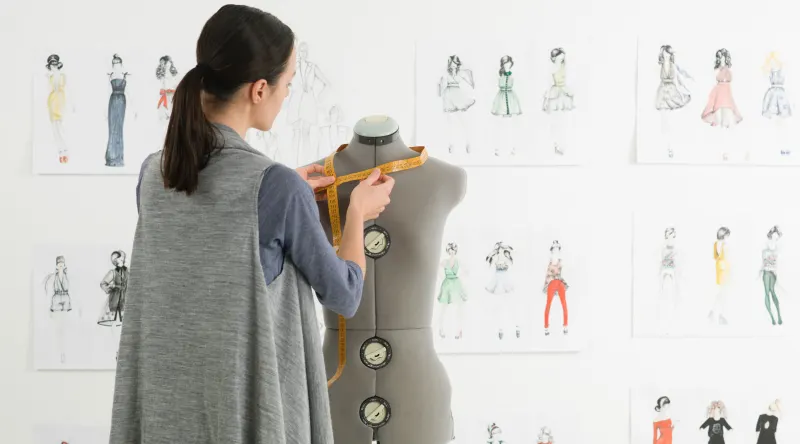DEADLINE TO APPLY: Thursday May 2nd , 2024
Shaping the Future of Fashion and Sustainability

Shaping the Future of Fashion and Sustainability
Fashion and sustainability haven’t always gone hand in hand throughout the past. However, a recent, growing focus on sustainability in the fashion industry discourse suggests a future where this may no longer be the case.
You’ll find the roots of fast fashion, and the start of its environmental impact, in the early to mid-1800s, when innovations in textile processing and production made it cheaper and easier to create and sell clothing on a mass scale. And, while it’s simple to understand the appeal of inexpensive, trend-driven shopping, the overconsumption spurred on by nearly 200 years of fast fashion manufacturing has had big implications for the environment.
According to the Sustainable Fashion Foundation, the more clothes we produce and buy, the more we harm our ecosystem. In fact, the fashion industry alone uses 21 trillion gallons of water a year (equivalent to about 37 million Olympic-sized swimming pools), making it “the second largest polluter of clean water globally after agriculture.” It also produces 10% of the world’s carbon emissions.
Fortunately, times are changing. Here’s what you should know about the industry trends taking the focus off fast fashion and putting it on sustainability.
The Sustainable Fashion Design Boom
The impact of mass-produced fashion on the environment is nothing new. So why the current boom and surge in sustainable fashion?
There are likely two big reasons for the shift:
- Growing consumer awareness and preferences about fashion’s eco-impact
- Innovations in textile and production technology offering brands new, less harmful ways to produce their lines
The trends go both ways. As consumer interest in sustainable fashion grows, so too does brand investment in it. And as brands introduce more sustainable options, consumers become less reliant on fast fashion and more willing to spend a little more time, money, and effort on sourcing responsible options.
Fashion Sustainability in Action
Making truly sustainable fashion requires action as much as awareness. Sustainable Jungle refers to this fashion evolution as “a more ethical approach to style that shifts the focus from constant consumption to thoughtful purchases that last.” Simply put: consumers are willing to put their money where their ethics are, even if that means foregoing fast fashion and the ability to constantly hop on new trends.
As for brands, we’re seeing a ton of new ideas, new processes, and new technologies that are forging the way for fashion’s more sustainable future. Among them:
Better fabric dyeing processes –
Every year, 1.3 trillion gallons of water are used just for dyeing fabrics. Enter digital fabric-coloring technologies that greatly reduce water waste, as well as the use of toxic chemicals, in the fabric dyeing process.
Man-made fabrics –
What if we could make leather in a lab instead of by harming animals? Man-made fabrics, including lab-made “leather” and 3D printed “fur” are on the rise, offering a cruelty-free alternative that also reduces carbon emissions.
Eco-conscious textiles
Cotton, nylon, and other common textiles aren’t biodegradable and take up a lot of real estate in landfills. A better choice: textiles made from sustainable materials like algae, apples, and oranges, which are compostable, biodegradable, and durable enough for clothing production.
The market for sustainable fashion is growing quickly, with experts predicting it will jump from a $6.35 billion industry in 2019 to a $15.17 billion industry in 2035. Join this new forefront with a fashion management master degree or by taking one or more of our short courses. Fashion design, styling, and management are all switching gears to sustainability—and at Istituto Marangoni, we can help you become part of the solution.



